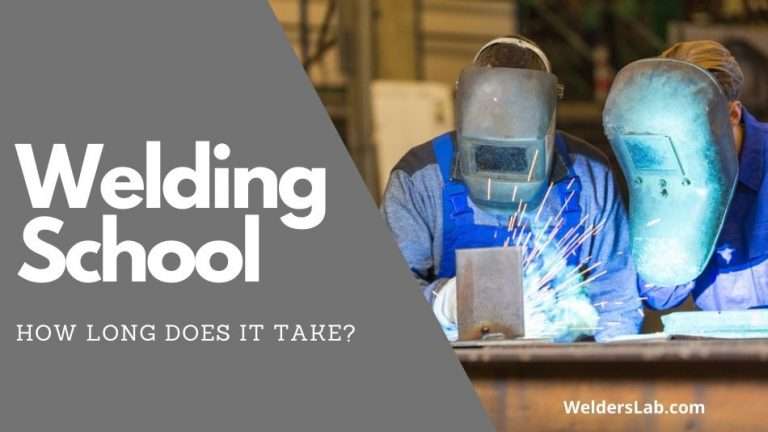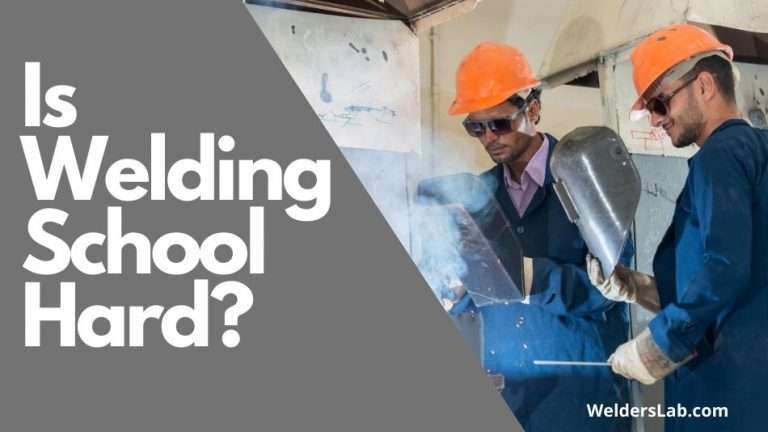7 Best Welding Schools in the United States: Ultimate Guide
Looking for the best welding schools in the United States? Welding is one of the top skill trades, with more than 45,000 job openings in the US each year. However, you might be wondering what the best welding school is for me?
The top welding schools in the United States include Tulsa Welding School (with multiple locations), Lincoln Electric Welding School in Cleveland, Ohio, and Hobart Institute of Welding Technology in Troy, Ohio, as well as many community colleges, all of which offer comprehensive hands-on training and AWS certification preparation.
I’ve spent considerable time researching the welding education landscape, talking to industry professionals, and analyzing what makes a welding program truly exceptional. Whether you’re a high school graduate looking for direction or someone ready for a career change, this guide will help you navigate the exciting world of welding education.
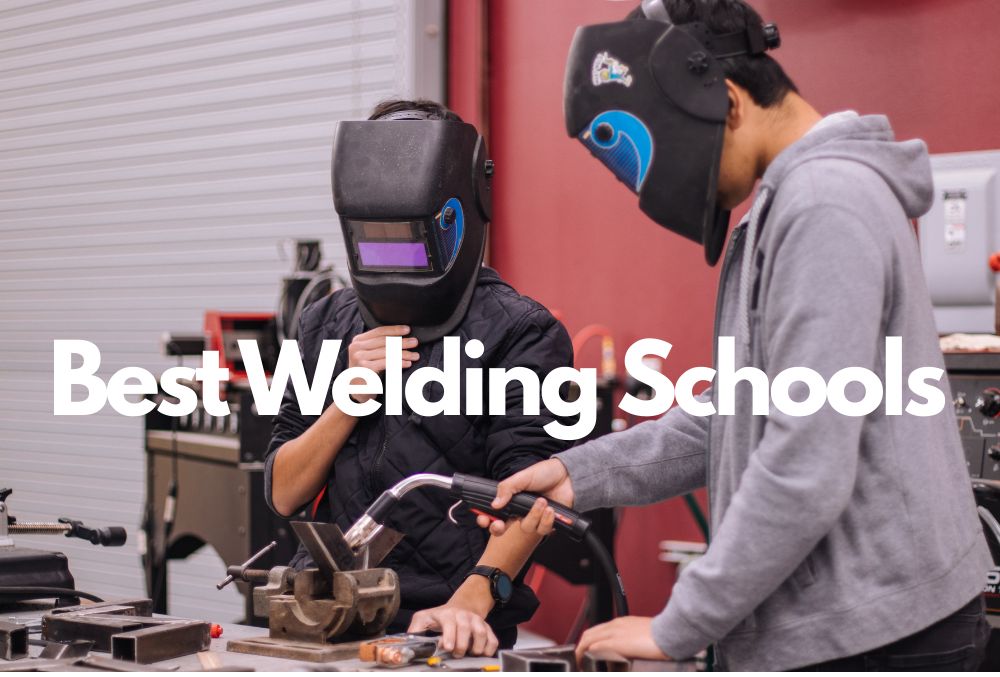
What Makes the Best Welding Schools Worth Your Time (and Money)?
Before we dive into our top picks, let’s talk about what separates the wheat from the chaff in welding education. Not all welding schools are created equal, and trust me, you don’t want to learn this lesson the hard way.
Accreditation is your best friend. Look for schools with proper accreditation from recognized bodies. This isn’t just bureaucratic red tape – it’s your assurance that the program meets industry standards and that employers will actually respect your credentials.
Hands-on training should be the star of the show. Sure, theory is important, but welding is fundamentally a hands-on skill. The best welding schools dedicate significant time to practical application, giving you the muscle memory and confidence you’ll need in the real world.
Equipment matters more than you might think. Modern welding schools should offer training on current industry-standard equipment. If you’re learning on machines that belong in a museum, you might struggle when you hit the job market.
Top Welding Schools That’ll Set Your Career on Fire
1. Tulsa Welding School – Multiple Locations
Let’s start with a heavy hitter. Tulsa Welding School has been forging welding careers since 1949, and they’ve pretty much perfected the formula. With campuses across multiple states:
- Tulsa, Oklahoma
- Jacksonville, Florida,
- Houston, Texas
- Dallas Metro (Irving), Texas
- Phoenix, Arizona
They offer comprehensive welding training that covers everything from basic stick welding to advanced TIG techniques.
What makes Tulsa stand out? Their 7-month welding program is intensive but thorough, covering MIG, TIG, stick, and flux-cored welding processes. Plus, they maintain strong industry connections that translate into real job placement assistance – not just empty promises.
With over 37,000 graduates and $7 million in scholarships available, it’s no wonder I put this school at the top of my list.
Want to Learn More?
- Click here if you want to schedule a tour
- Click here to request more info
- Call them at (855) 806-4921.
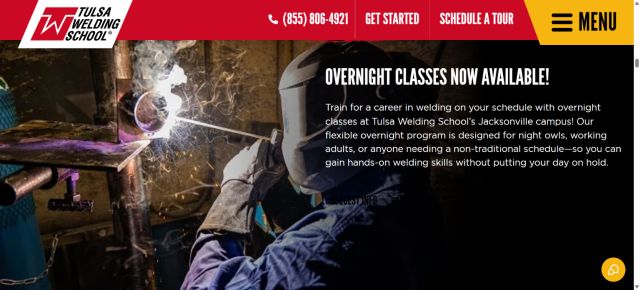
2. Lincoln Electric Welding School – Cleveland, Ohio
When the company that practically invented modern welding runs a school, you pay attention. Lincoln Electric’s welding school offers a unique advantage: you’re learning from the people who literally write the book on welding technology.
Their 18-week program is no joke – it’s comprehensive, demanding, and designed to produce welders who can handle anything the industry throws at them. The curriculum includes blueprint reading, welding symbols, and safety protocols that meet AWS standards.
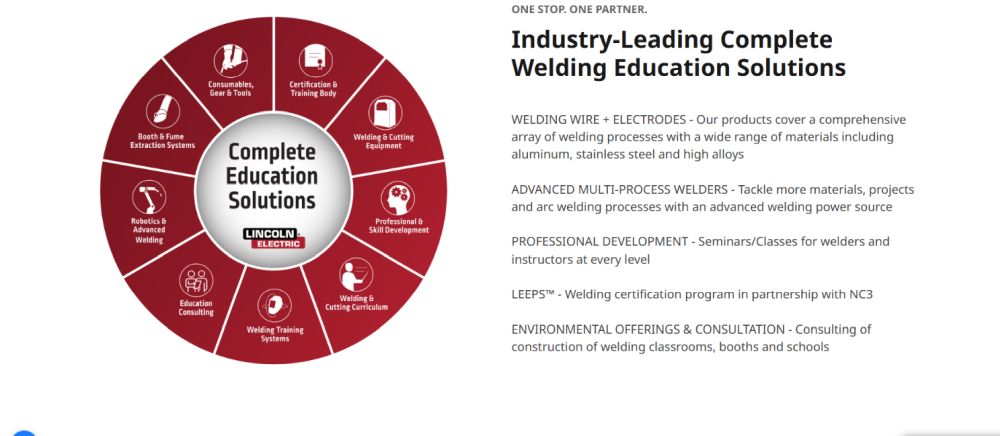
Want to Learn More?
Click here to contact Lincoln Electric and learn more.
3. Hobart Institute of Welding Technology – Troy, Ohio
If you’re serious about becoming a welding professional, Hobart Institute deserves your attention. They offer everything from basic welding courses to advanced metallurgy programs that can set you apart in specialized industries.
Hobart offers two main welding programs:
Pathway Programs:
- 40 Week Program, 1400 Clock Hours, 140.0 CEUs
- $23,700 in Tuition Cost
- Covers Core Training, Pipe Fitters, Weld Fabricator, and Downhill Pipe Fitter
Structural Welding Programs:
- 26 Week Program, 910 Clock Hours, 84.0 CEUs
- $15,400 in Tuition Cost
- Covers welding technology, blueprint reading, oxyacetylene, MIG, TIG, and Fluxcore welding
Beyond that, they also offer courses in CWI (Certified Welding Inspector)
They also offer scholarships and financial aid. I know one particular individual who took the 40-week program and combined it with a two year engineering degree and landed a very nice job at a factory building lift trucks.
What I love about Hobart is their flexibility. They offer day and night welding classes, making it possible to pursue welding education even if you’re working around other commitments. Their hands-on approach means you’ll spend significant time in the booth, perfecting your technique under expert guidance.
Want to Learn More?
- Click here to get more information about the programs they offer
- Click here to schedule a tour
- Call Hobart Institute at 1-800-332-9448
4. Arc Academy – Chicago, IL
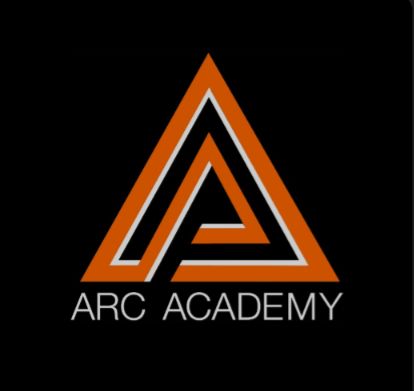
Arc Academy is a welding and fabrication makerspace located in Chicago that operates as a community-focused workshop rather than a traditional welding school. The academy offers hands-on welding classes in MIG, TIG, and stick welding processes, but does not provide certifications and requires no prior experience.
Their program structure includes beginner
- MIG classes ($120 each)
- TIG welding courses ($135 each),
- Flux core/stick welding classes
- Blacksmithing/forging courses ($175 each).
After completing the first two MIG classes, students can become members for $105/month, gaining access to the shop and equipment from 9 a.m. to 9 p.m.
Arc Academy also offers intensive “Weld Camp” programs ($1,250 for a week-long course), private lessons, and project-based fabrication courses like table making, making it more of a maker community than a formal trade school.
The one downside to this program is that it is not an acredited school and does not offer train for AWS certifications.
Want to Learn More?
- Click here to Join Arc Academy
- Send emails to [email protected] to learn more
- Call 312-912-8622
5. Community College Welding Programs – Sinclair
Don’t overlook your local community college. Many offer accredited welding programs that combine affordability with quality education. These programs often have strong local industry connections and can be more flexible with scheduling.
If you are looking for a community college in your area to learn how to weld, start by going to Google and doing a search for “Community College Welding Schools near me.” This will give you a great place to start.
The best community college welding programs offer:
- AWS certification preparation
- Flexible scheduling options
- Affordable tuition rates
- Strong local job placement networks
One particular community college I like is Sinclair, located in Dayton, Ohio. What I like about this program is that it gives you a more well-rounded approach to welding. Sinclair offers two different certificates in welding.
Program 1: Welding and Metal Joining:
- 18 Credit Hour Certificate
- Complete in 16 Weeks
- Covers Welding & Metal Joining, Mechanical Drafting, Tools & Machining, Dimensional Metrology, and Math for Technologists
Program 2: Welding, Metal Joining, and Fabrication
- 30 Credit Hour Certificate
- Includes everything from the first program, plus CNC machines, jig & fixtures, and more
Want to Learn More?
- Contact Ron Ulrich at [email protected]
- Call 937-512-2570
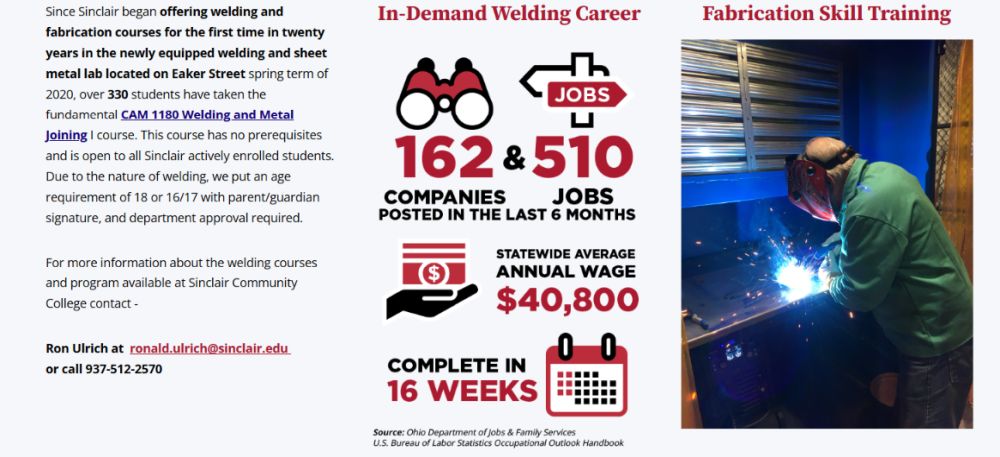
6. Stark State College – Akron, Ohio
Stark State College’s Welding Program is where serious welders go to level up their skills. Their brand-new Welding and Joining Center features 14 state-of-the-art welding booths that’ll make you feel like you’re training in a professional shop.
What You’ll Learn:
- All the major welding processes – MIG, TIG, arc welding, and gas welding
- Every position imaginable – horizontal, vertical, and overhead welding
- Specialty materials – aluminum, stainless steel, and even titanium
- Advanced techniques – from basic joints to nuclear and pressure vessel welding
Certification Options:
- Short-term certificates for quick skills (TIG welding, pipefitting)
- AWS exam prep to get you certified for 3G and 6G testing
- One-year comprehensive program that can count toward a full associate degree
The Bottom Line: This isn’t your typical community college welding class. Stark State’s program goes from beginner-friendly basics all the way up to the kind of specialized welding that pays serious money. Plus, everything you learn here can stack toward a full industrial technology degree if you decide to keep going.
Perfect for anyone who wants real welding skills that employers actually respect.
Want to Learn More?
- Call Steve Tornero Department Chair, Industrial Technologies at 330-494-6170 ext. 5364
- Email Steve at [email protected]
- Click here to schedule a vist
7. Universal Technical Institute (UTI) – Multiple Locations
UTI’s welding program stands out for its comprehensive approach and industry partnerships. Their 36-week welding technology program covers everything from basic techniques to advanced fabrication methods.
What sets UTI apart is its focus on career services. They don’t just teach you to weld – they actively work to connect you with employers who value their graduates.
This school teaches GMAW, SMAW, FCAW, GTAW process. With 13 campuses located around the United States

Want to Learn More?
- Click here to request more info
- Call 1-800-834-7308
What You’ll Actually Learn (Hint: It’s More Than Just Melting Metal)
Quality welding schools teach far more than just how to strike an arc. Here’s what you can expect from a comprehensive welding program:
Core Welding Processes: You’ll master MIG welding (the workhorse of the industry), TIG welding (for precision work), stick welding (the reliable old-timer), and flux-cored welding. Each process has its place, and knowing when to use what makes you valuable.
Blueprint Reading and Welding Symbols: This might sound boring, but it’s absolutely crucial. Being able to read and interpret welding symbols and blueprints is what separates a true professional from someone who just knows how to melt metal.
Metallurgy Basics: Understanding what happens to metal when you heat it, cool it, and stress it isn’t just academic knowledge – it’s practical information that affects every weld you make.
Safety Training: Welding can be dangerous if you don’t know what you’re doing. Proper safety training isn’t just about following rules – it’s about developing habits that’ll keep you healthy throughout your career.
The Real Talk About Welding School Costs
Let’s address the elephant in the room: welding school isn’t free, and costs can vary dramatically. Here’s what you’re looking at:
Private Welding Schools: Expect to pay anywhere from $8,000 to $25,000 for a comprehensive program. Yes, that’s a significant investment, but consider this: skilled welders can earn $40,000 to $80,000+ annually, making the education pay for itself relatively quickly.
Community Colleges: These are often your most affordable option, with programs ranging from $3,000 to $12,000. The trade-off might be longer programs or less specialized equipment.
Financial Aid Options: Don’t assume you have to pay everything up front. Many welding students qualify for federal financial aid, and some schools offer payment plans or scholarships specifically for welding students.
Frequently Asked Questions (Because I Know You Have Them)
How long does a welding program typically last? Most comprehensive welding programs run 6-18 months, depending on whether you’re going full-time or part-time. Some intensive programs can get you job-ready in as little as 6 weeks, while more comprehensive programs that include advanced techniques and metallurgy can take up to two years.
Are welding schools accredited, and why should I care? Absolutely, and you should care a lot. Accredited welding schools meet industry standards and are recognized by employers. Non-accredited schools might save you money upfront, but they could cost you opportunities later.
What types of welding processes will I learn? Most quality programs cover the “big four”: MIG (GMAW), TIG (GTAW), Stick (SMAW), and flux-cored (FCAW) welding. Some advanced programs also include submerged arc welding and plasma cutting.
Can I get certified through welding school? Many welding schools help you prepare for AWS (American Welding Society) certification tests, but the actual certification usually comes from AWS testing facilities. Some schools are AWS accredited testing facilities themselves.
What should I look for in a welding school’s curriculum? Look for programs that balance hands-on practice with essential theory. The curriculum should include safety training, blueprint reading, metallurgy basics, and multiple welding processes. Job placement assistance is also crucial.
Are there flexible scheduling options? Many schools offer evening classes, weekend programs, or accelerated intensive courses. Some even offer hybrid programs combining online theory with hands-on lab time.
What are the job prospects after graduation? The Bureau of Labor Statistics projects 8% growth in welding jobs through 2030, which is about average. However, skilled welders in specialized fields (underwater welding, aerospace, pipeline work) can command premium salaries.
Making Your Decision: What Really Matters
Here’s something I wish someone had told me when I was researching welding education: the “best” school isn’t necessarily the most expensive or the most famous. The best school for you is the one that fits your goals, budget, and schedule while providing quality education.
Consider your career goals. Are you interested in artistic metalwork, heavy industrial construction, or maybe underwater welding? Different schools have different strengths and industry connections.
Think about location. While welding skills are transferable, starting your career near where you trained often provides advantages through school connections and local industry relationships.
Don’t forget about hands-on training time. This is where you’ll develop the actual skills that matter. Schools that skimp on lab time might save money, but they’re shortchanging your education.
Beyond the Classroom: What Successful Welding Students Do
The best welding students don’t just show up to class – they immerse themselves in the trade. Here are some strategies that separate the future welding professionals from the hobbyists:
Practice outside of class. If possible, set up a small home workshop or find additional practice opportunities. Welding is like playing an instrument – the more you practice, the better you get.
Network within the industry. Attend local welding society meetings, trade shows, and industry events. The welding community is surprisingly tight-knit, and personal connections often lead to the best opportunities.
Stay current with technology. Welding technology continues to evolve. The best professionals stay informed about new processes, materials, and techniques.
Your Next Steps: From Research to Reality
Ready to take the plunge? Here’s your action plan:
- Research schools in your area using the criteria we’ve discussed
- Visit campuses if possible – seeing facilities and meeting instructors can be incredibly revealing
- Talk to graduates – current students and recent graduates can provide insights you won’t get from admissions counselors
- Consider your financing options early in the process
- Apply to multiple programs to keep your options open
The Bottom Line: Your Future is What You Make It
Choosing the right welding school is just the beginning of your journey, not the end destination. The best welding schools provide you with solid fundamentals, practical experience, and industry connections – but your success ultimately depends on your dedication, practice, and willingness to continue learning.
The welding industry offers incredible opportunities for those willing to put in the work. From traditional manufacturing to cutting-edge aerospace applications, skilled welders are building the world around us. With the right education and commitment, you could be joining their ranks sooner than you think.
Whether you choose a prestigious private school or your local community college, the key is finding a program that challenges you, supports your goals, and prepares you for the real world of professional welding. Your perfect welding school is out there – now go find it and start building the career you’ve been dreaming about.
The sparks are waiting, and your future in welding is just a decision away. Make it count.
Ready to start your welding journey? Research the schools mentioned in this guide, visit their websites, and don’t hesitate to reach out with questions. Your new career in welding could be just months away.

